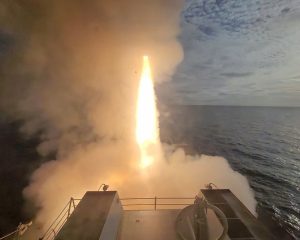
The Navy used both manned and unmanned assets to have an Arleigh Burke-class guided-missile destroyer launch and hit a target using a Standard Missile (SM)-6 from over-the-horizon ranges, service officials said Monday. During the Navy’s Unmanned Integrated Battle Problem (UxS IBP) 21 an SM-6 from the USS John Finn (DDG-113) hit the target on April 25. The overall exercise lasted from April 19-26. The target was a “relatively small target with a radar reflector as well as a repeater” to…

 By
By 











